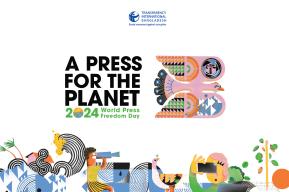News
Traditional Owners carry out eDNA sampling in Ningaloo Coast

Water samples were collected from 5 locations across Ningaloo Coast World Heritage area. The sampling was conducted by Baiyungu Rangers together with members of the Department of Biodiversity, Conservation and Attractions of the Government of Western Australia.
The team filtered genetic material of species with the help of eDNA citizen-science sampling protocols and equipment provided by UNESCO. Preservation liquid was subsequently added to the samples to fix the eDNA and make them ready to ship to a specialized lab for analysis, alongside other eDNA samples from around the world.
Environmental DNA is an innovative scientific method that can be used to monitor and evaluate ocean biodiversity without the need to extract organisms from their environment. Just one liter of water may contain genetic material from hundreds of species and may help determine the area’s biodiversity richness.
The UNESCO environmental DNA Expedition initiative is being rolled out across 25 marine World Heritage sites between September 2022 and April 2023. The eDNA data is expected to provide a one-off snapshot of biodiversity richness across marine World Heritage sites, particularly for fish species.
By combining the resulting biodiversity data with Intergovernmental Panel on Climate Change (IPCC) heat scenario projections, the initiative aims to provide a first glimpse of potential geographic and distribution shifts of fish species as a result of climate change which then in turn can inform conservation decision-making.
The eDNA Expeditions’ resulting data will be made publicly available through the UNESCO Ocean Biodiversity Information System, the world’s largest open science marine species database. Final results are expected to be available in Spring 2024.
The UNESCO eDNA initiative is a joint collaboration between the Intergovernmental Oceanographic Commission and the World Heritage Centre. It is made possible with the support of the Government of Flanders (Kingdom of Belgium) and implemented in the context of the United Nations Decade of Ocean Science for Sustainable Development (2021-2030).
About the Ningaloo Coast World Heritage site (Australia)
Located on the remote western coast of Australia, Ningaloo Coast includes one of the longest near-shore reefs in the world, and was inscribed on the UNESCO World Heritage List in 2011. The site supports the largest documented aggregation of whale sharks in the world and hosts an unusual diversity of marine turtle species with an estimated 10,000 nests deposited along the coast annually. Ningaloo Reef harbours a high marine diversity of more than 300 documented coral species, over 700 reef fish species, roughly 650 mollusc species, as well as around 600 crustacean species and more than 1,000 species of marine algae.






